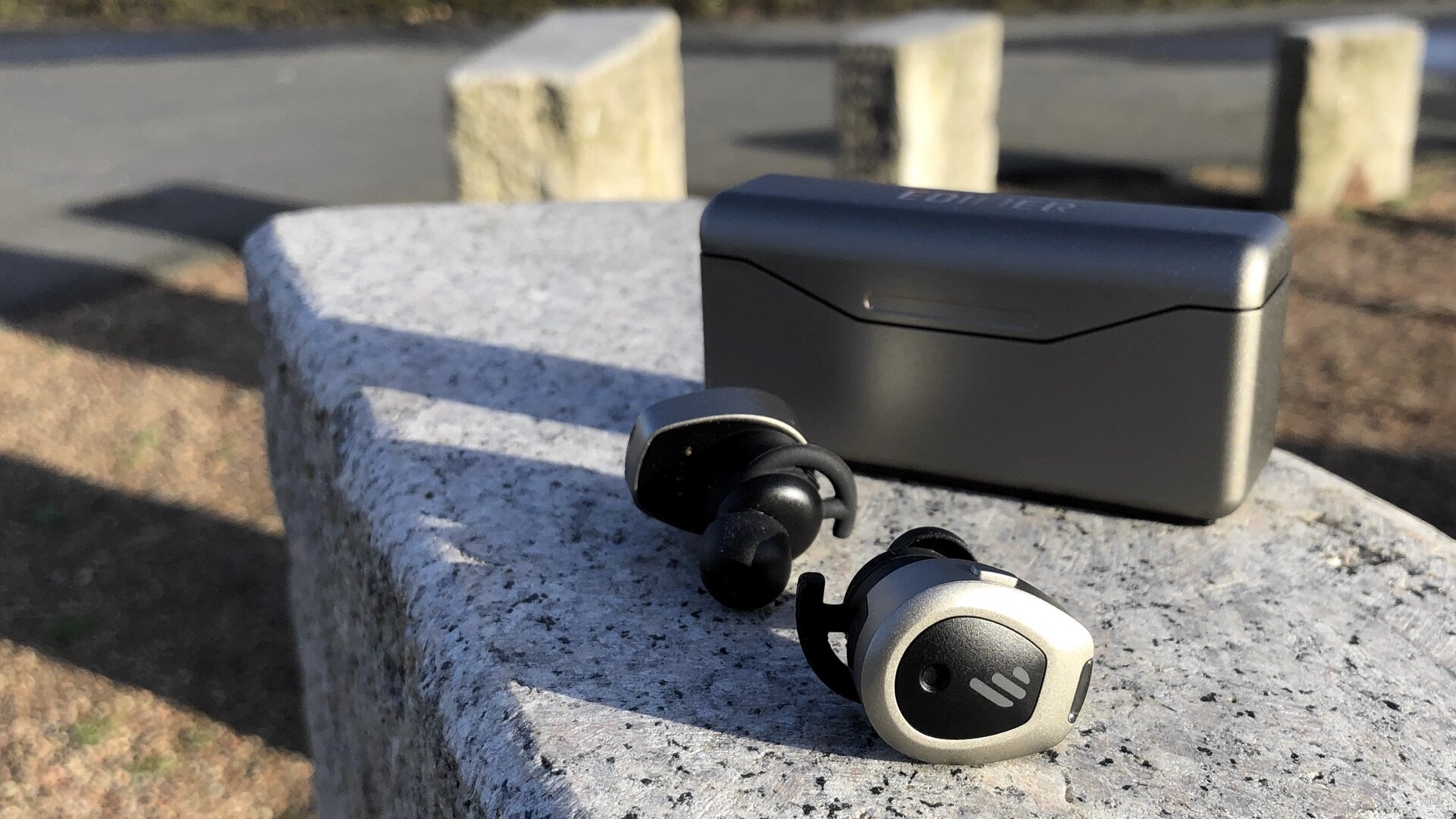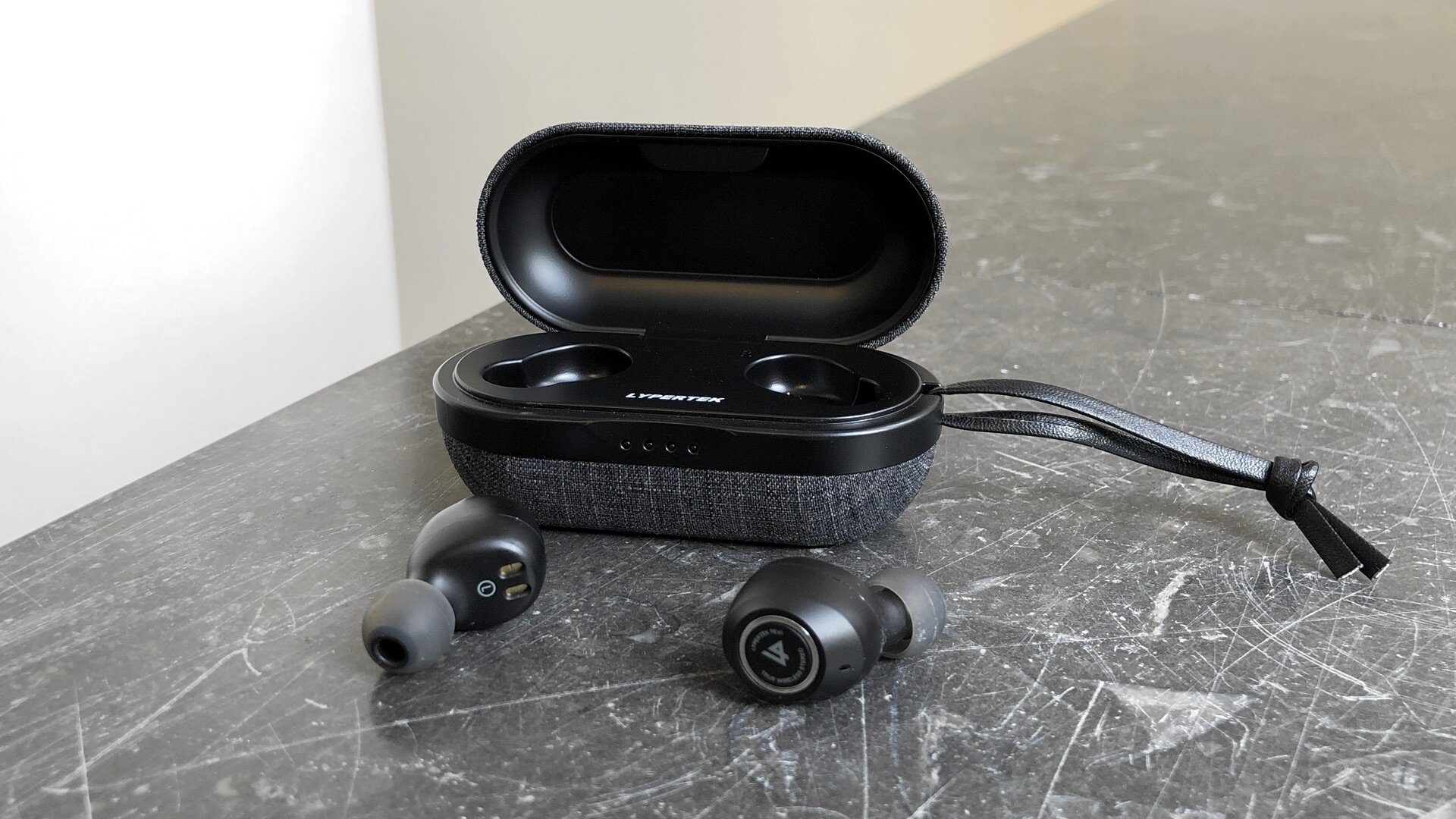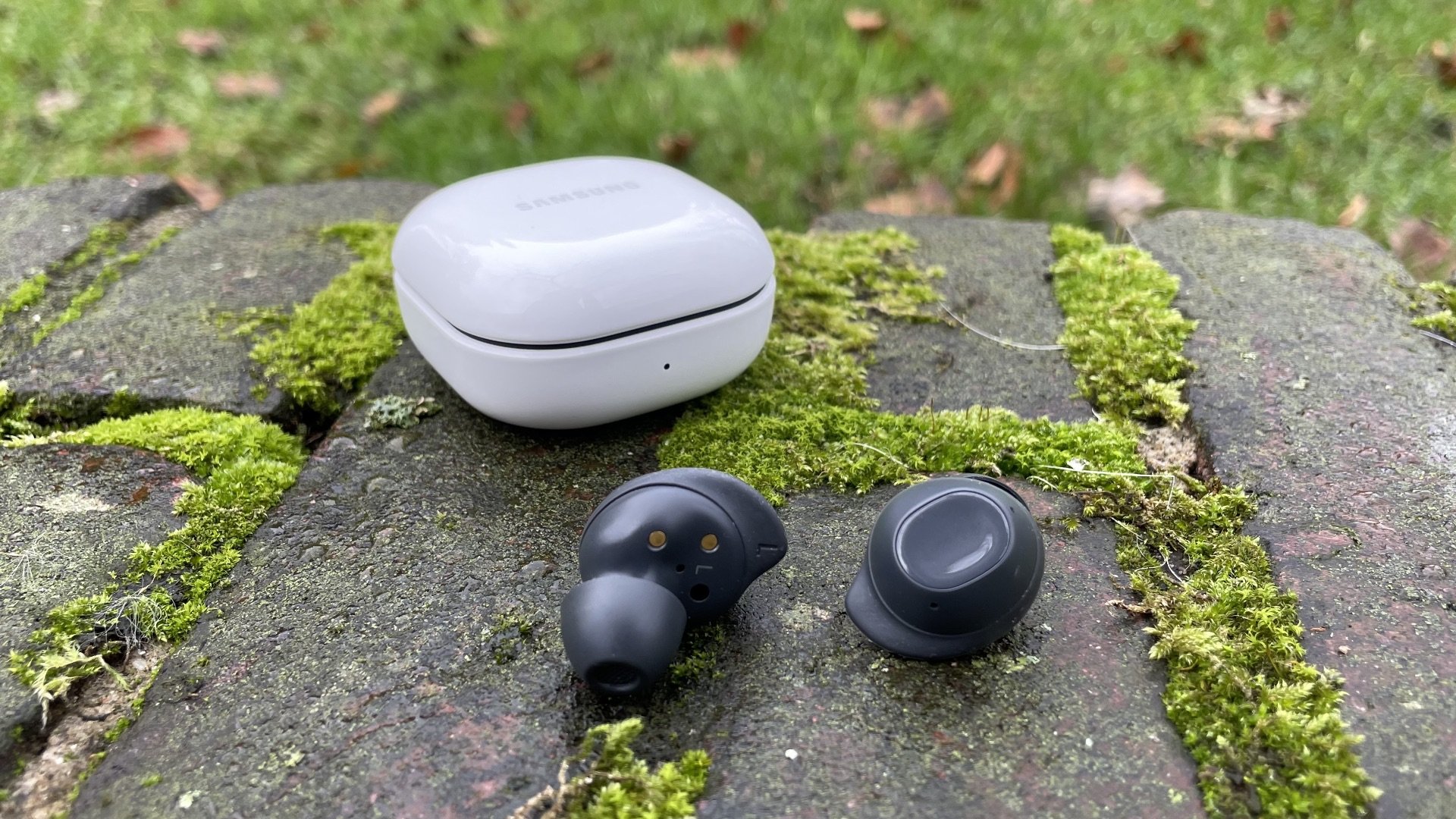TWS true wireless earphones - under $100
FOUR STARS - The BGVP Q2 is the first combination of a wired and wireless earphone. A fun concept that performs solid both ways, although the sound signature may not be for everyone.
BGVP Q2 specs:
Bluetooth 5.0 with Knowles armatures
6-7 hours listening on a full charge
Charging case can charge earpieces fully 3 times
Comes with 7 sets ear tips and a USB-C charging cable
$80 on Drop - check current price!
Below this review you can find direct comparisons between the BGVP Q2 vs Fiil T1X, Samsung Galaxy Buds, Master & Dynamics MW07, Edifier TWS NB, Tin Audio T2 and BLON BL03 with TRN BT20s
Design, charging and comfort
The BGVP Q2 earpieces are on the bigger side, but they're not as bulbous as you might imagine from a model that combines a wired with a wireless setup. There are already tones of wired earphones (IEMs) that have this exact shape. It's impressive BGVP found a way to also put the wireless technology in.
While the earpieces are bigger than most truly wireless earbuds, they stay tight and comfortable in your ears. They follow the shape of your ears both on the outside and inside. On the upper part of the earpieces, you can see the gold-coloured MMCX-slot for connecting the cables. Combined with the also gold-coloured microphone hole next to it and the semi-transparent housing, which lets you see the internals, the BGVP looks original.
Having MMCX-plug on the earpieces prevents the BGVP from having a waterproof rating. It feels tricky to take these out in even light rain. Happily, the battery lets you listen up to 6 hours on a single charge. The case can recharge the pieces three times fully and can be recharged via USB-C itself.
The fact that the BGVP connects to wires via the MMCX-connection is somewhat strange. It's great you can buy any MMCX-cable and use it on the Q2, but MMCX isn't the type of connection you want to pull out and in all the time. You put the cables in and then twist them in. The joint is tight and secure, but MMCX it's just not made for swapping so often. It wouldn't be the first time a cable stays stuck in an MMCX-earbud. A 2-pin-connection may have been a better choice.
The charging case is square, and a bit bulky; the case is a little wonky, and it takes some hassle to take the earpieces out. It also requires some tweaking to make the earpieces connect with the charging magnets inside the case. Those remarks may be forgivable. What isn't, are the incredibly bright blue LED-lights the BGVP fires off when you're using them - the left and right one right after each other. You can't use these in the dark or bedroom.
It may not be perfect, but it's surprising how convenient and natural this combination of a wired and wireless IEM is.
Connectivity and controls on BGVP Q2
Connectivity on the BGVP Q2 is excellent. When you switch from wireless to wired on the same device, you'll have to adjust the volume slider for the earpieces to sound correctly again - but that's the biggest challenge the wired-wireless combination brings. Switching between the two modes works just well.
The Bluetooth 5.0 connection on the Q2 is strong. It keeps its signal up to ten meters and also works well in areas crowded with wireless signals. It connects and pairs quickly when you take it out of the charging case. The wireless signal trumps the wired one, by the way, so be sure to turn off Bluetooth on your device to make sure you only have a wired connection.
The BGVP Q2 controls conveniently. Double-tap the side to play or pause the music, tap three times on the right bud to advance a track; three times on the left one to return a song. It isn't possible to change the volume on the earpieces, unfortunately.
Calling and watching movies
Watching a video wirelessly with the BGVP Q2, doesn't go as flawlessly as with other recently released wireless earbuds. On the challenging YouTube-app on iPhone, it just misses being lipsync with people you see talking. Happily, audio-video synchronization is spot-on on services like Netflix and Amazon Prime, and all Android video apps. Gaming does go with a noticeable delay.
When it comes to calling with the BGVP Q2, well... don't. The weirdly placed microphone picks up all kinds of noises, but rarely your voice. In the best scenario, you sound distant and metallic. Mostly calling is downright undoable.
Also read: The best true wireless earphones under $100
Sound quality of BGVP Q2: bright
The BGVP Q2 uses two much-praised Knowles drivers. One takes care of the lower frequencies, the other one of the mids and highs. It's the higher frequencies that are the star of the show here.
The BGVP Q2 has greatly extended, yet balanced upper-mids and highs. They are surrounded by air. The Q2 presents music in a wide soundstage, with lots of room for acoustic and classical instruments to shine. Except for the most crowded pieces - where the sound can be a bit congested - it's easy to place instruments around you. The separation between instruments and tones is outstanding. Vocals sound crisp and clear and come with a substantial amount of detail - such as gasps, breaths, and nuances.
At the same time, the Q2 keeps the highs in control. Even on higher volumes, the BGVP rarely sounds harsh. Cymbals, for example, sound natural and loud - but not so painstakingly loud you immediately want to lower the volume. Unfortunately, in songs that offer a lot of mids out of themselves, the sound can be a little splashy and even a bit distorted.
The BGVP Q2 is a brighter sounding earphone. That's because the lower frequencies play a mostly supportive role. The sub-bass can fiercely rumble in your ears in songs like James Blakes Limit to Your Love, and in dance songs, the mid-bass kicks fast and makes for an uplifting listen. The Q2 doesn't offer a generous amount of lows, however. Bass-slams end quickly and don't sound very deep. Lower-mids, like darker electronic tones and drums, are dragged towards the mids a bit.
Sound quality: wired vs wireless
Switching from wireless to wired on an iPhone X, the sound is altered only minimally. Lows gain a small amount of weight, but mids also sound a little more splashy. Another reviewer, which seems to use a smartphone for a wireless connection and a specific DAC for wired connection, states the bass becomes tighter, and the layeredness of the music increased with the wire plugged-in. Still, different source devices could also cause this. On an iPhone X and Xiaomi Mi A1 Android-phone, both the wired and wireless sound is remarkably similar.
While not the most suited for lovers of bass, the BGVP Q2 is a stellar sounding pair of wireless earphones in mids and highs - performing great in acoustic and more classical genres.
Selected Comparisons
BGVP Q2 vs Fiil T1X
The $65 Fiil T1X a fuller sound than the Q2, with more presence in lower-mids and a more substantial bass thump. The BGVP sounds brighter, with more extended highs and more natural sounding higher-pitched vocals. Both have a convincing soundstage and instrument placement and enjoy good detail in the mids. The Fiil sounds more coherent with its added lows, however. Not to mention it has an app with equalizing options.
BGVP Q2 vs Samsung Galaxy Buds
The $130 Galaxy Buds is another set of comfortable wireless earphones with a big focus on the mids. It has a slightly warmer sound, with a larger amount of bass and lower-mids. The 'Gbuds' pulls vocals more towards the lower frequencies, while the Q2 makes them sound brighter. Both have a convincing soundstage with excellent separation. It's easier to place instruments on the BGVP, but the Samsung handles very crowded pieces better. On Android, it comes with an app with equalizing settings as well.
Samsung Galaxy Buds review here
BGVP Q2 vs Edifier TWS NB
Also for $130, the Edifier TWS NB is a different beast than the BGVP Q2. The Q2 is more focused on the mids and highs and places vocals more in front than the Edifier. The TWS NB has a warmer sound, with steadier pumping bass and more smoothed-out vocals. It also adds convincing ANC active noise cancellation in the mix. You can't fall back on a wire when the battery empties - but the Edifier battery only dies after 9 hours with ANC off, making it a good alternative to the BGVP Q2.
BGVP Q2 vs Lypertek Tevi
After the installation of the firmware update, the $90 Lypertek Tevi sounds slightly darker than the BGVP Q2. The Tevi bass sounds deeper and hits harder, making the sound also fuller. Vocals and higher frequencies are more detailed on the BGVP, with voices sounding smoother on the Tevi. Dynamics on the Tevi are better; it performs more robust in crowded music pieces, without drowning the one frequency for the other.
BGVP Q2 vs Master & Dynamics MW07
At $300, the Master & Dynamics is in another price category than BGVP's offering. In sound character, both are comparable. The MW07 extends upper-mids and highs even further, presenting vocals more prominent - but at the risk of sounding too splashy or harsh sometimes. The BGVP controls its highs better and makes it easier to place instruments around you. The MW07 has a bigger soundstage and a more massive, deeper bass, and offers better dynamics. The BGVP Q2 is more comfortable and provides better battery life.
No Master & Dynamics MW07 review
BGVP Q2 vs Blon BL03
Connect the $30 Blon BL03 wired earphone to the $25 TRN BT20s Bluetooth module, and one of the most praised wired IEMs of last year becomes a great wireless performer. In this setup, The Blon BL03 has more presence in the bass and lower-mids, with bass-guitars reaching detail they can't quite grasp on the BGVP Q2. The BLON has thicker mids, but they can be surrounded with more of a hiss when they kick in. The Q2 offers more nuances in the mids and highs. Both have a treble-accented sound signature that can be too harsh for mainstream listeners - but both deliver a vast amount of detail.
Buying links: Blon BL03 and TRN BT20s
BGVP Q2 vs Tin Audio T2
The much-praised $40 wired earphone Tin Audio T2 still stands against the BGVP Q2. The Q2 has a slightly firmer bass kick, making music sound more uplifting. Yet, the T2 has a warmer, fuller sound with more emphasis on lower-mids. It has a more balanced character, while the Q2 sounds brighter, and its mids are somewhat splashier. Like the BLON BL03, the Tin Audio T2 can also be made wireless via the TRN BT20s.
Buying links: Tin Audio T2 and TRN BT20s
Verdict
The BGVP Q2 delivers a unique combination of wired and wireless earphones - and does so with a steady battery life and convincing, bright sound quality. It could use a little more weight in the lower frequencies, though.
Four STARS - good
Buy BGVP Q2/ check current price:
I received the BGVP Q2 for free for testing and reviewing purposes. I test and review all audio products equally honest - read about it here.
Consider buying this earphone? I'd really appreciate it if you use the links in this article. It won't cost you extra, yet it will financially support me a bit in my ongoing quest for great affordable audio. <3
Also read:















